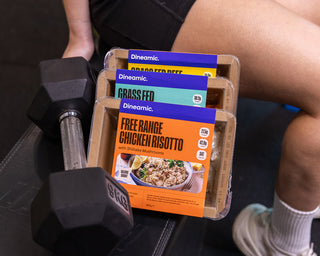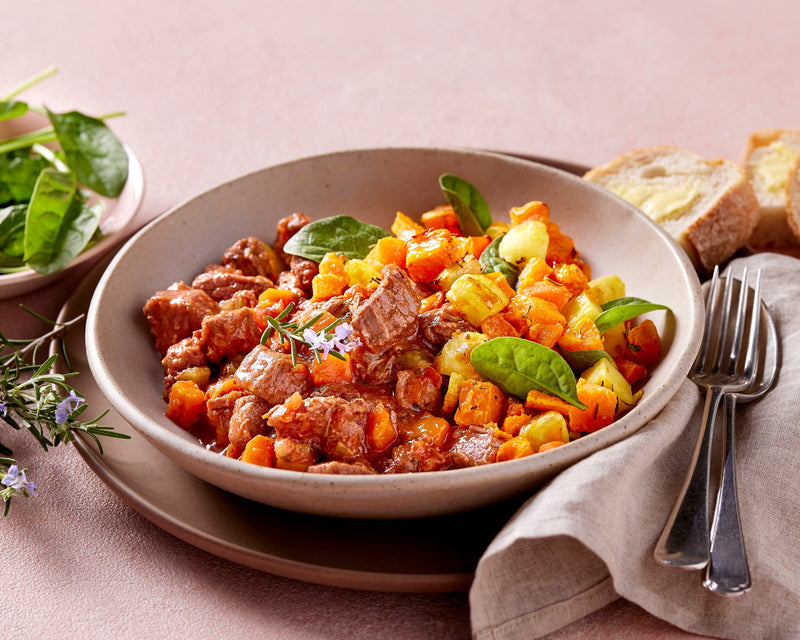
We love spring! The days are getting longer, the sun shines brighter, and everyone is able to get out and really enjoy the outdoors again.
Best of all, all the beautiful spring produce comes into season! The benefits of eating seasonally are endless, from the great effects on our health to being environmentally friendly. Try eating seasonally this spring and we guarantee both you and your wallet will feel amazing!
SPRING PRODUCE
The produce in spring is so beautiful and colourful - it can really spice up your menu.
There’s a myriad of amazing fruits around like mangoes, cherries, cumquats, papaya, strawberries, and all the melons: watermelon, cantaloupe, honeydew, grapefruit. Blueberries will also be back in November, so get those pie cases ready.
In terms of vegetables, you can look forward to eating beautiful asparagus, capsicum, zucchini, corn, cucumber and eggplant. Trust us, they will taste even better than usual.
Hass avocados are also still around until January, so make the most of them while you can. Shepard avocados however are off the menu.
HOW TO USE SPRING FRUITS AND VEGETABLES
There are so many ways to cook and eat spring produce - whether you’re wanting to compliment a main meal, bring a salad to a dinner party, or make a beautiful fruit-filled dessert, there are plenty of options.
Having friends over, or just a spring barbecue with the family? Try some colourful salad ingredients, like shaved asparagus, thinly sliced radish, shaved fennel, or fresh mint leaves. You can roast some beetroot as a side dish or briefly blanch green beans and toss them in a pan with crispy pancetta or chorizo. For dessert, serve up some strawberries with homemade ice cream - quick and simple but fresh and delicious, you can’t go wrong!
Here at Dineamic we love our Tuscan Vegetable Risotto packed with tasty spring vegetables like capsicum, eggplant and zucchini, as well as our Chicken Burrito Mix and our Bircher Muesli with Berries.
BENEFITS
1. HEALTH
The nutrients in fruits and veggies begin to break down as soon as they’re harvested, so if you’re wanting bang for your buck in terms of nutritional value, the fresher the produce is the better. Certain nutrients, such as water-soluble vitamins like A and C, are more susceptible to losses during long storage times and transportation. The antioxidants in fruits and vegetables are also at their best and most potent when freshly picked.
A great way to find the freshest seasonal produce is to shop at your local farmers’ market, this way you can sure that the food you’re taking home has come straight from the farm and hasn’t spent weeks travelling to get to you.
2. VARIETY
Another advantage of eating seasonal produce is the great variety you’re getting. It’s a fantastic opportunity to try things that you may not have tasted before, like squash or the sweet and juicy loquat. It’s super beneficial for our health to make sure we’re eating a large variety of vitamins and minerals - and the easiest way to do this is to eat lots of different, colourful fruits and vegetables. You (or the kids) also won’t bored eating the same thing all the time!
3. TASTE
Fresh seasonal fruits and vegetables are not only healthy for us, but they taste ah-mazing too. There’s absolutely nothing better than biting into crisp, fresh, in-season watermelon, or a sweet, juicy, spring mango.
4. COST EFFECTIVE
Eating seasonally is also friendly on the wallet would you believe?! Because seasonal produce comes from local sources and there’s heaps of so it’s generally cheaper. Contrary to popular opinion, you certainly don’t have to spend a lot to eat healthy, delicious food.
5. ENVIRONMENTALLY FRIENDLY
Yes, it’s great to eat organically and to avoid synthetic chemicals and pesticides, but sustainability is about much more than just ‘organic’ produce. It’s important to also consider things like food miles, water and energy used for growing the produce, and storage. If an organic vegetable has been transported from the other side of the country or sitting in an energy-sapping fridge for months, it’s certainly not environmentally friendly or as good for you.
Food wastage is also a huge concern for the environment. Before going out and buying your food for the week, or once you’ve brought your lovely fresh produce home - it’s a great idea to plan your meals. Knowing what to cook each day and making sure to use all the ingredients you have ensures that zero food gets wasted, and you haven’t wasted money either.
FRESH VS. FROZEN
You may be thinking to yourself ‘But what about those frozen berries I put in my morning smoothie…are they bad for me?’ The answer is… no, not at all!
Many studies have proven that freezing food does not destroy the nutritional value, in fact, freezing produce at peak ripeness locks in the nutrients and slows down the growth of microorganisms that cause spoilage. Whereas processing procedures such as boiling and canning have been shown to negatively affect nutrient retention. Check out the science behind it in our previous blog Is Frozen Fresher Than Fresh?
So, take the challenge this spring and see how you go eating mainly seasonal produce! Of course, this won’t be possible 100% of the time, especially if there’s a specific ingredient you’re wanting to use in a recipe that’s not in season locally. The best way to look at it is if you aim to eat seasonally 80% of the time, you’ll make a big difference to your health, wallet, and the environment - and your tastebuds!
Tell us in the comments below what your favourite spring fruit or vegetable is and what dish you love it to have it in.










